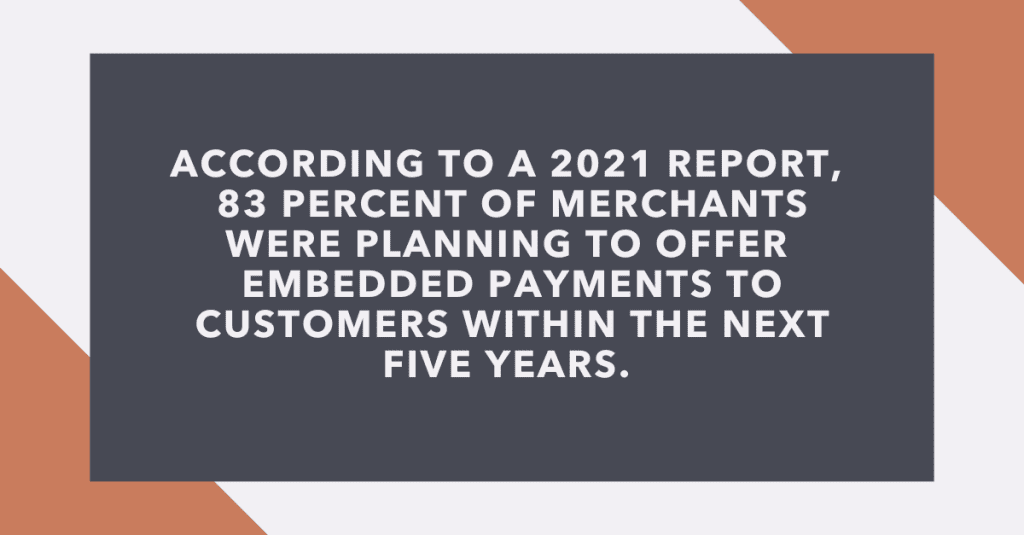
The Problem with Disjointed Payments
When it comes to payments, however, disconnected technologies are a major problem.
When your customer service reps have to enter order information into a legacy program, then go to a separate application to process the customer’s credit or debit card, then go back to their original application to continue on with the rest of the transaction, it eats up valuable time and increases the likelihood of errors.
The same is true for manual reconciliation. When your accounting or finance team has to hand-match receipts from one system to transactions in another system, that makes your settlement process unnecessarily complicated.
These issues are especially notable for companies with significant transaction volumes. Unfortunately, the problem only compounds as your business grows. At scale, manual payment processing becomes more and more cumbersome.
One way to solve this problem?
Embedded payments.
Embedded payments let you process transactions within your existing applications. You can quickly and easily charge a customer’s card as part of a routine transaction. There’s no need to re-enter dollar amounts or card values multiple times, across multiple systems. Employees can execute credit and debit card transactions in real time, then move the order to its next step. Payments are built in – not bolted on.
A Concept Consumers Already Know – And Love
Embedded payments aren’t a new concept – at least, from a customer’s perspective. In fact, you’re probably already familiar with integrated transactions as a consumer.
Think about the last time you used a ride-sharing service or pre-ordered your lunch on a mobile app. Assuming it wasn’t your first time using the service, you didn’t have to manually enter your credit card number or swipe your card in a terminal at the restaurant. All you did was tap a few buttons and get into a vehicle or pick up your meal. The entire process was a seamless, integrated experience.
The same concept applies on the back end as a merchant. Whether B2B or B2C, online or brick-and-mortar, embedded payments become a seamless part of each transaction. For a new customer, enter their card details on the same screen you used to start their order. For a repeat customer, use a payment token to charge a card on file.
As financial technologies continue to become smarter, faster, and more convenient, there’s no reason that your business can’t achieve the same time savings and convenience that consumers have now come to expect. That’s why embedded payments are one of the leading ways that companies are modernizing their payment operations.
Can Embedded Payment Tools Accommodate Merchants’ Unique Transaction Types?
Not every sale is as simple as “the customer pays X dollars for Y product”. For some payments, a merchant needs to run a pre-authorization for a different amount than the final transaction. Other times, a business needs to place a hold while making a product to order. Then there are refunds and credits.
To accommodate your unique transaction types, you need an embedded payments tool that’s flexible enough to work with all your use cases. Ultimately, though, that’s the beauty of integrating payments into your existing processes. You dictate when, where, and how you execute your transactions. From there, your back-end technologies make it happen.
How Do Embedded Payments Work?
To embed payments into your legacy software, your development team will need to add new functionality to your code. Find out what the programming process looks like in this behind-the-scenes look at a payment integration.
However, as long as your existing business processes meet your needs, you won’t have to change them. You simply add one step to select a payment method and run the transaction. When done correctly, there’s no need for complicated procedural changes or training.
Are Commercial Software Packages Flexible Enough to Accommodate Embedded Payments?
Some ERP packages have a reputation for being hard to customize. That can be true – but when it comes to embedding payments, there are ways to make the process easier.
Some software vendors already offer out-of-the-box payment integrations. It may be worth a call to your provider to see what they have to offer.
If you’re using a platform that doesn’t yet have a native solution, you can more easily develop your own by finding fintech tools that share a language with your existing system.
At Curbstone, for instance, we offer RPG-native technologies to embed payments into any application that runs on the IBM i (AS/400) – including home-grown solutions. Written in a familiar language, our developer-friendly APIs make it easy to embed payments into your existing processes. One toolkit gives you everything you need for online, in-person, and mail order/phone order sales; you can integrate them one at a time or all at once. Whatever your approach, you can turn to our US-based payments team for help at every step of the way.
Discover Curbstone’s Embedded Payment Solutions
Interested in embedding payments into your iSeries-based application? Contact Curbstone to learn more about our embedded payment solutions:
A Trusted Member Of The Payments Industry



